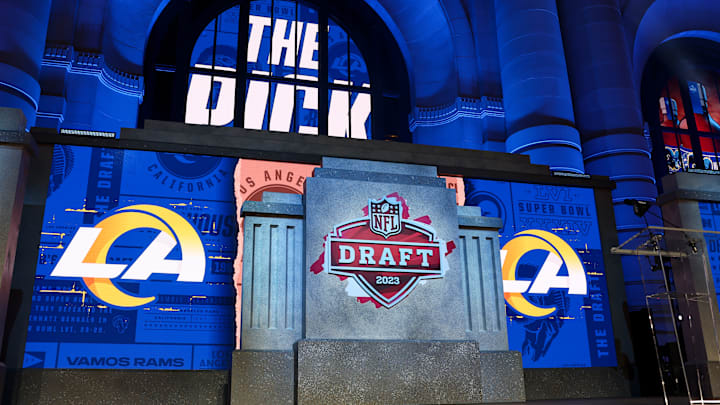
What is the criteria for a draft hit?
What constitutes a true 'hit' for a rookie prospect who is selected in the NFL Draft? For some, that is a lofty bare to get over. A player could be held to a standard of making the Pro Bowl before their rookie contract expires. Or even held to such an elite status that they earn All-Pro honors before that four year rookie contract expires.
But is that truly a fair assessment? In a July 2022 article by Charlie Parkinson of the33rdteam.com, he asserts that a hit can be defined simply as a "drafted player who signs a second contract with the team that they played their rookie contract on." While that creates some challenges for the LA Rams (which we will discuss later), it does give us a place to start. Parkinson examined the draft classes of 2013 through 2017, and the positions that were selected in the first round of those five draft classes.
Problems with simple criteria
The problem which such a simple definition does allow for virtually anyone to decipher the answer of the complex question with a simple binary litmus test. If a rookie is extended by the original drafting team after that player's rookie contract expires, that prospect is a hit.
For all NFL teams, any decision to extend a player is not just about that player's competency. What if the team has limited funding? What of the teams that strategically allow competent players to seek bigger paydays elsewhere, but who are still quality starters? The recent history of the LA Rams is littered with examples of players who were still contributing, but who were forced to seek employment elsewhere.
Complex challenges commonly oppose the use of simple answers. But even a simple answer is easily disputed on its merits alone. Do fans agree that the first overall player selected faces no greater scrutiny to success in the NFL than the 32nd player chosen in an NFL Draft? But if you do not believe that they should be held to the same standard, where do you draw the line?
Knowing these limits at a minimum allows us the opportunity to venture forth knowing that we are close, but not scientifically accurate, with our analysis. Like sticking your finger into a bucket of water, we can be hot, tepid, cool, or ice cold in our analysis. So let's proceed:
